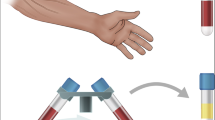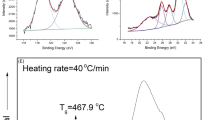Abstract
ED affects a significant proportion of males worldwide. With an ever-aging population the prevalence of ED is predicted to double in the next decade. Oral PDE-5 inhibitors are the first-line treatment for ED and have revolutionised its management. These agents are however ineffective in some men. Intracavernosal injection (ICI) of vasoactive agents is an effective second-line therapy for ED. Despite proven efficacy, needle phobia and anxiety with self-needling limit the use of intracavernosal (IC) therapies. Needle-free injection (NFI) devices allow delivery of parenteral therapies through the skin, without a needle. Although these devices have been available for decades, early studies investigating their use for ICI showed inferiority compared to standard needle-tip syringe delivery. Advances in engineering of these systems have lead to functional improvements of many aspects of fluid delivery. Our research demonstrates that modern NFI devices are better equipped to deliver ICI, and, in the cadaver models examined, achieved successful IC delivery. These findings support the potential feasibility of NFI devices to deliver ICI, and may broaden the utility of these devices to patients who refuse or discontinue IC therapy because of needle phobia or other issues with standard needle-tip syringes.
This is a preview of subscription content, access via your institution
Access options
Subscribe to this journal
Receive 8 print issues and online access
$259.00 per year
only $32.38 per issue
Buy this article
- Purchase on Springer Link
- Instant access to full article PDF
Prices may be subject to local taxes which are calculated during checkout




Similar content being viewed by others
References
Lue TF . Erectile dysfunction. N Engl J Med 2000; 342: 1802–1813.
Feldman HA, Goldstein I, Hatzichristou DG, Krane RJ, McKinlay JB . Impotence and its medical and psychosocial correlates: results of the Massachusetts Male Aging Study. J Urol 1994; 151: 54–61.
Ayta IA, McKinlay JB, Krane RJ . The likely worldwide increase in erectile dysfunction between 1995 and 2025 and some possible policy consequences. BJU Int 1999; 84: 50–56.
Eardley I, Donatucci C, Corbin J, El-Meliegy A, Hatzimouratidis K, McVary K et al. Pharmacotherapy for erectile dysfunction. J Sex Med 2010; 7: 524–540.
Hatzimouratidis K, Hatzichristou DG . A comparative review of the options for treatment of erectile dysfunction: which treatment for which patient? Drugs 2005; 65: 1621–1650.
McMahon CN, Smith CJ, Shabsigh R . Treating erectile dysfunction when PDE5 inhibitors fail. BMJ 2006; 332: 589–592.
Masson P, Lambert SM, Brown M, Shabsigh R . PDE-5 inhibitors: current status and future trends. Urol Clin North Am 2005; 32: 511–525.
Shabsigh R, Padma-Nathanb H, Gittlemanc M, McMurray J, Kaufmane J, Goldstein I . Intracavernous alprostadil alfadex (EDEX/VIRIDAL) is effective and safe in patients with erectile dysfunction after failing sildenafil (Viagra). Urology 2000; 55: 477–480.
Brannigan RE, Spitz A, Schatte EC, Orejuela FJ, Lipshultz LI, Kim ED . Comparison of sildenafil citrate (Viagra) versus trimix intracavernosal injection (ICI) as treatment for erectile dysfunction (ED). J Urol 1999; 161: 214.
Lin JS, Lin YM, Jou YC, Cheng JT . Role of cyclic adenosine monophosphate in prostaglandin E1-induced penile erection in rabbits. Eur Urol 1995; 28: 259–265.
Porst H . Current perspectives on intracavernosal pharmacotherapy for erectile dysfunction. Int J Impot Res 2000; 12 (Suppl 4): S91–S100.
Nelson CJ, Hsiao W, Balk E, Narus J . Injection anxiety and pain in men using intracavernosal injection therapy after radical pelvic surgery. J Sex Med 2013; 10: 2559–2565.
Van Driel MP, Mooibroek JJ, van de Wiel HBM, Mensink HGA . Intracavernosal pharmacotherapy: psychological, sexological and medical aspects. Int J Impot Res 1991; 3: 95–104.
Polito M, d ’Anzeo G, Conti A, Muzzonigro G . Erectile rehabilitation with intracavernous alprostadil after radical prostatectomy: refusal and dropout rates. BJU Int 2012; 110: E954–E957.
Rowland DL, Boedhoe HSM, Dohle G, Slob AK . Intracavernosal self-injection therapy in men with erectile dysfunction: Satisfaction and attrition in 119 patients. Int J Impot Res 1999; 11: 145–151.
McAllister L, Anderson J, Werth K, Cho I, Copeland K, Le Cam N et al. Needle-free jet injection for administration of influenza vaccine: a randomised non-inferiority trial. Lancet 2014; 384: 674–681.
Ravi AD, Sadhna D, Nagpaal D, Chawla L . Needle free injection technology: a complete insight. Int J Pharm Investig 2015; 5: 192–199.
Giudice EL, Campbell JD . Needle-free vaccine delivery. Adv Drug Deliv Rev 2006; 58: 68–89.
Engwerda EE, Abbink EJ, Tack CJ, de Galan BE . Improved pharmacokinetic and pharmacodynamic profile of rapid-acting insulin using needle-free jet injection technology. Diabetes Care 2011; 34: 1804–1808.
Halle J, Lambert J, Lindmayer I, Menassa K, Coutu F, Moghrabi A et al. Twice daily mixed regular and NPH insulin injections with new jet injector versus conventional syringes: pharmacokinetics of insulin absorption. Diabetes Care 1986; 9: 279–282.
Harding LM, Adeniyi A, Everson R, Barker S, Ralph DJ, Baranowski AP . Comparison of a needle-free high-pressure injection system with needle-tipped injection of intracavernosal alprostadil for erectile dysfunction. Int J Impot Res 2002; 14: 498–501.
Mitragotri S . Current status and future prospects of needle-free liquid jet injectors. Nat Rev Drug Discov 2006; 5: 543–548.
Jimenez N, Bradford H, Seidel KD, Sousa M, Lynn AM . A comparison of a needle-free injection system for local anesthesia versus EMLA for intravenous catheter insertion in the pediatric patient. Anesth Analg 2006; 102: 411–414.
Christensen MS, Hargens CW, Nacht S, Gans EH . Viscoelastic properties of intact human skin: instrumentation, hydration effects, and the contribution of the stratum corneum. J Invest Dermatol 1977; 69: 282–286.
Schramm J, Mitragotri S . Transdermal drug delivery by jet injectors: energetics of jet formation and penetration. Pharm Res 2002; 19: 1673–1679.
Shergold OA, Fleck NA, King TS . The penetration of a soft solid by a liquid jet, with application to the administration of a needle-free injection. J Biomech 2006; 39: 2593–2602.
Casabe A, Bechara A, Cheliz G, Romano S, Rey H, Fredotovich N . Drop-out reasons and complications in self-injection therapy with a triple vasoactive drug mixture in sexual erectile dysfunction. Int J Impot Res 1998; 10: 5–9.
McCabe MP, Althof SE . A systematic review of the psychosocial outcomes associated with erectile dysfunction: does the impact of erectile dysfunction extend beyond a man's inability to have sex? J Sex Med 2014; 11: 347–363.
Sung HH, Ahn JS, Kim JJ, Choo SH, Han DH, Lee SW . The role of intracavernosal injection therapy and the reasons of withdrawal from therapy in patients with erectile dysfunction in the era of PDE5 inhibitors. Andrology 2014; 2: 45–50.
Hamilton JG . Needle phobia: a neglected diagnosis. J Fam Pract 1995; 41: 169–175.
Hassan HA, Tohid H, Amin RM, Bidin MBL, Muthupalaniappen L, Omar K . Factors influencing insulin acceptance among type 2 diabetes mellitus patients in a primary care clinic: a qualitative exploration. BMC Fam Pract 2013; 14: 164.
Larkin ME, Capasso VA, Chen CL, Mahoney EK, Hazard B, Cagliero E et al. Measuring psychological insulin resistance: barriers to insulin use. Diabetes Educ 2008; 34: 511–517.
Mohr DC, Cox D, Epstein L, Boudewyn A . Teaching patients to selfinject: pilot study of a treatment for injection anxiety and phobia in multiple sclerosis patients prescribed injectable medication. J Behav Ther Exp Psychiatry 2002; 33: 39–47.
Althof SE, Turner LA, Levine SB, Risen C, Kursh E, Bodner D et al. Why do so many people drop out from auto-injection therapy for impotence? J Sex Marital Ther 1989; 15: 121–129.
Park JR, Kim CI, Park CH . Efficacy, satisfaction, and drop-out rate of alprostadil (prostagladin E1) intracavernosal injection according to etiologic cause of erectile dysfunction. Korean J Androl 1999; 17: 111–115.
Schoubbena A, Cavicchib A, Barberinic L, Faraond A, Bertid M, Riccia M et al. Dynamic behavior of a spring-powered micronozzle needle-free injector. Int J Pharm 2015; 491: 91–98.
O’Kane D, Gibson L, Davidson A, Lawrentschuk N . MP-13.08: Needle-free delivery of intracavernosal injections: proof of concept. World J Urol 2015; 33: 62.
Acknowledgements
Preliminary data from the animal experiments in this manuscript were presented at the 35th Congress of the Société Internationale d’Urologie, and the accompanying conference abstract has been published.
Disclosure
The devices used in this research were supplied, on loan, by Meditrend International, VIC, Australia.
Author information
Authors and Affiliations
Corresponding author
Ethics declarations
Competing interests
The authors declare no conflict of interest.
Rights and permissions
About this article
Cite this article
O'Kane, D., Gibson, L., du Plessis, J. et al. Delivery of intracavernosal therapies using needle-free injection devices. Int J Impot Res 29, 225–228 (2017). https://doi.org/10.1038/ijir.2017.27
Received:
Revised:
Accepted:
Published:
Issue Date:
DOI: https://doi.org/10.1038/ijir.2017.27
This article is cited by
-
Erectile dysfunction: a global review of intracavernosal injectables
World Journal of Urology (2019)



